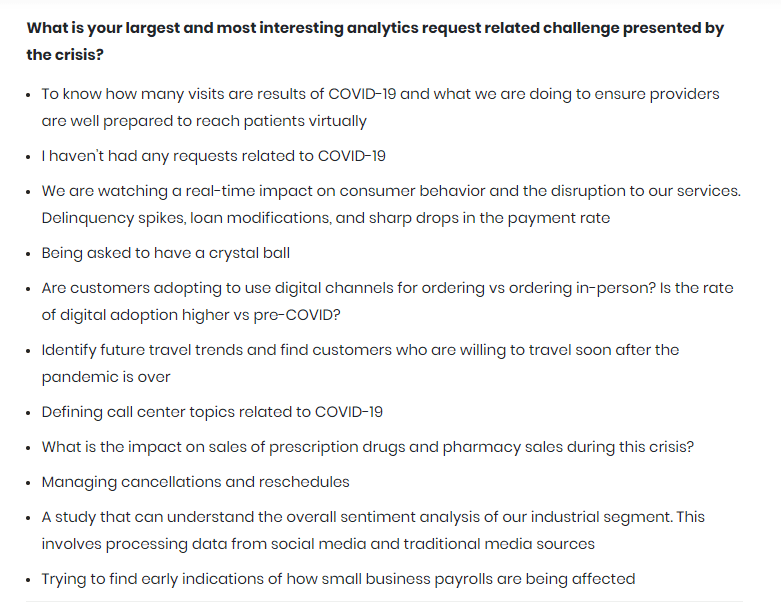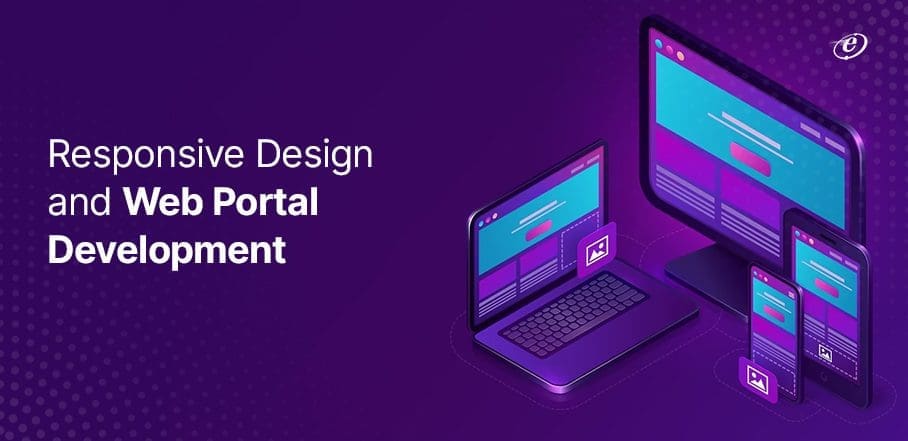
How Data Analytics & Visualization Can Help Your Business Tackle COVID-19?
In 2008, when businesses around the world were battling the steepest recession since the Great Depression of 1929, British Airways (BA) did something that made its industry and non-industry peers take notice. While the company cut its IT spending (among other expenses) by a third, it spared its BI (Business Intelligence) unit from a similar fate. Rather, BA’s investments in business intelligence and analytics helped it increase savings, streamline direct marketing campaigns, and even bust a fraud travel agent ring.
In 2020, however, the nature of the economic crisis induced by the COVID-19 pandemic is far different. Data on the disease, its spread, and short- and long-term effects on the economy are still evolving. Despite these hurdles, basing important decisions on data-driven insights remains your best bet to ensure business continuity and success.
In this post, we look at how data analytics and data visualization can help you and your business prepare for COVID-19-related uncertainties, how to leverage them for building short- and long-term business strategies, and how to use them for the overall improvement of your business.
How Data Analytics & Data Visualizations Help to Fight COVID-19?
Governments, think-tanks, and private organizations around the world have extensively relied on data analytics and data visualization to map the spread of the Coronavirus in real-time. Some have even managed to identify and work on possible drug molecules using AI to inhibit the virus and treat COVID-19.
The data used for creating visualizations, mathematical models, and training neural networks is collected and fed by people working at COVID-19-affected locations. They include factors such as incubation period, transmissibility, risk factors, and mortality rate.

Source: Johns Hopkins
Real-time data visualizations, such as the above one by Johns Hopkins University, have proved instrumental in enabling government agencies, policy-makers, researchers and even business owners to understand the impact of the pandemic.
We’ve previously written about a handful of real-life applications of data analytics, data visualization, and artificial intelligence (AI) to help with the fight against COVID-19.
How Data Analytics Can Help Your Business Thrive During COVID-19?
The peculiar nature of this economic crisis notwithstanding, data analytics and BI is still being used extensively to understand and tackle prevailing business challenges. For instance, a recent Burtch Works survey of data analytics professionals showed that 40.8% of respondents reported that their organizations were relying heavily on data analytics to design their COVID-19 response.

Source: Burtch Works
Interestingly, 32.7% of respondents confirmed they were dealing with a substantial number of requests related to dealing with COVID-19 impacts while 3.1% reported their organizations had asked them to focus solely on business intelligence and analytics efforts to mitigate the business impact of COVID-19.

Source: Burtch Works
As both of these graphs show, the way organizations used data analytics and BI throughout the survey evolved, which is in keeping with the evolving nature of COVID-19’s business impact.
The evolution was also observed in the purposes for which these organizations used data analytics – ranging from supply chain disruption in week one to defining call center topics related to COVID-19 in week two.
Most interesting analytics request by organizations during week one –

Source: Burtch Works
Most interesting analytics request by organizations during week two –

Source: Burtch Works
How Data Analytics Can Help Your Business Deal with COVID-19?
Gartner has laid out a few key ways in which your business can rely on data analytics and visualization to weather the COVID-19 crisis.
- Data analytics can help you forecast and predict COVID-19’s impact on your business’s operations, products and services, and overall supply and demand. This can form the basis of your business generation and recovery plans for the crisis.
- Real-time data analytics and visualization can help you spot a shift in business trends earlier than your competitors. An automated alerting mechanism can then share such important information with every stakeholder in your business – from employees to partners, vendors, and third-party suppliers.
- Data analytics can help you identify areas of your business than can be automated. For instance, automating customer service functions like phone and online chat support.
- Data analytics and BI can also improve aspects of your business that might seem mundane but have outsized impacts on your organizational productivity. This includes identifying alternate pathways for your employees, goods, and services. Data analytics can further help with the daily planning of your organization.
What Your Business Must Do to Tackle COVID-19 with Data Analytics?
Taking a data-driven approach to dealing with the COVID-19 crisis calls for a change at the procedural as well as behavioral level in your organization.
- For starters, all your business continuity plans and actions must be based on data analytics. Use data visualizations, dashboards, and alerts/notifications to interpret the analytics in real-time.
- Set up an assessment and measurement mechanism to monitor the health of not only your business but also your employees. Address all issues flagged by this mechanism on a war footing.
- Identify different business scenarios and the data required to monitor and handle the impact on business – e.g. in aspects such as production, supply chain, IT, and human resources.
- Don’t rely completely on your organization’s internal data alone. Leverage reliable third-party data sources were available to help create more robust forecasts and predictions. Additionally, ensure every participant in your organization can easily and instantly access any essential information.
The last point is especially important as the COVID-19 situation will keep evolving over the next couple of years. The same can also be said for its impact on your employees, operations, business, suppliers, industry, region, and government. By basing your decisions on both internal and external third-party data, you’ll be better placed to deal with the uncertainties that are inherent to doing business in the COVID-19 era.
The Johns Hopkins coronavirus dashboard highlighted previously is a great example of a third-party data source that is reliable and offers excellent granularity. While there are several other dashboards that you can choose from, make sure to use them in conjunction with data from your local public health entity.
How to Ensure the Success of Your Data Analytics Efforts to Deal with COVID-19?
- Redefine your KPIs to track the business impact of data analytics. These KPIs are more important than ever before and will help guide decision-making in your organization. You might even need to develop additional indicators in keeping with the changes/disruptions caused by COVID-19.
- Address challenges to data-driven decision making such as the absence of data culture, fragmented and siloed data, irrelevant and dated data, and nonalignment between data and business KPIs.
- Pay special focus on monitoring the quality of data and if it’s suitable for reporting, devising, and making important business decisions. This is vital as up to 80% of data analytics involves processing and cleaning of data for a particular use case.
- Audit your data assets regularly and assess if they can be bolstered with more resources and third-party data. In the case of the latter, evaluate reputed and verifiable third-party services.
Over to You
The way your business responds to the challenges posed by COVID-19 might well decide its future fortunes. By employing business intelligence and analytics during this crisis, your organization will be in a better place to gauge customer needs and respond accordingly. And much like British Airways, you can reap not only the financial rewards of doubling down on analytics during a crisis but also enjoy the goodwill that comes with serving your customers efficiently through a generational crisis like COVID-19.
If you are looking at data analytics to light the pathway for your decision making during the COVID-19 pandemic, our team is here to help. Our data analytics and BI team can build a system that helps you understand your customers, competitors, and markets through actionable numbers and intuitive visualizations.
If you liked this post, do subscribe to get crisp and informative blog posts delivered straight to your inbox every week. Our posts touch a variety of topics including web and mobile development, data analytics, business intelligence, and eCommerce.



